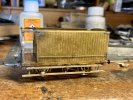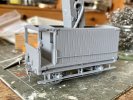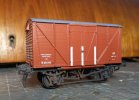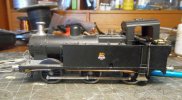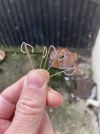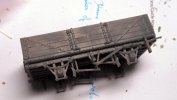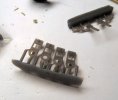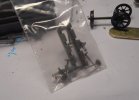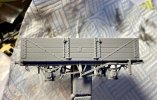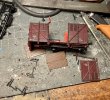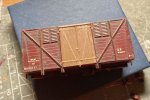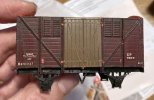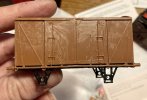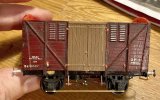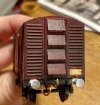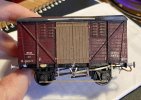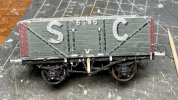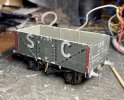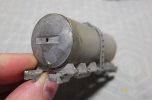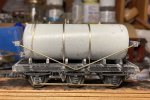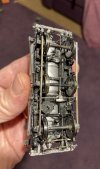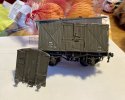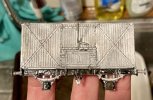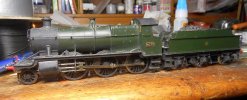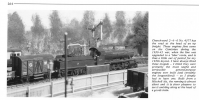Podimore - in my imagination, anyway - had a dairy and that means milk tanks. I enter into this subject with significant trepidation as the things are complicated, massively varied in minor details and *in the same wagon* split between different owners. Added to that, the different pre-Nationalisation railways did their own versions. Kits are few, complex, and expensive (and not in production) and the two RTR versions in 4mm are a bit naff (though the LIMA one has a good, scale, tank and decent fittings, it turns out).
I made a start on the chassis for one some time ago and it stalled, wanting for enthusiasm. A chance purchase of a complete vehicle (which seems to include etched bits from David Geen, but the castings look a bit crude for that - didn't Keyser do one?) for next to nothing recently - and dad admitting defeat with his Geen kit - means the project has woken from its slumbers and I have bits sufficient for three, and a LIMA donor tank for a fourth, if willpower allows.
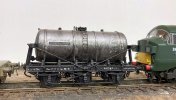
Here's the tank 'as found'. It's a bit of a state, missing a buffer at one end, but came near complete, and in EM (a bonus!) and, despite the solebar's bold proclamations, it's actually a GWR type which had been... modified to make it LMS-ish. Why 'ish'? The LMS gave their milk tanks coach wheels while the other three railways went for wagon wheels and, yes, the brake levers were in roughly this position, but...
no. That said, it's square, it doesn't fall off dad's test track, and cost me just over a tenner.
A dunk in IPA removed the 'weathering', the LMS lettering, and the silver paint. I was actually a bit peeved about the latter as it'll be a swine to mask up when the time comes. One strap came off, as did the ladders, brake and steam pipes, and, unfortunately, some of the end ironwork. The turned brass buffers were removed, taking the buffer beam with it as the epoxy gave way.
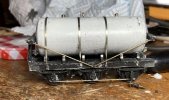
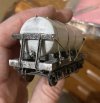
Anyway, after a protracted clean up I soldered the displaced buffer beam back on and patched the damaged one with a scrap of whitemetal which should make it a bit more durable. The thing will end up as a diagram O.39 with Dean Churchward brakegear as delivered to United Dairies with one of those attractive (and, thanks to Rumney Models, modellable), access platforms some Unigate vehicles had. The other two vehicles in the branch milk train will have more sophisticated (sprung!) underpinnings, but more of those in 2023. Probably.
Adam
